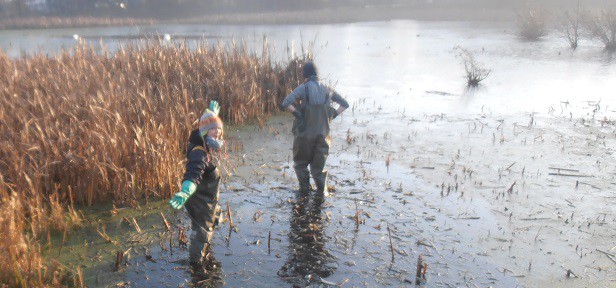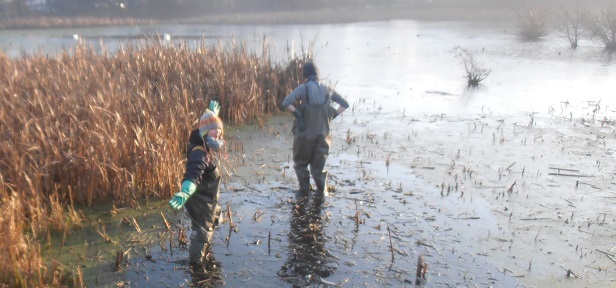
Just before Christmas TCV’s OPAL community scientist Amy Styles and Coastal Communities trainee Rebecca Cairns were out for some Citizen Science with volunteers with the Stirling mid-week group at the Helix in Falkirk.
We donned our waders (mine had a hole in them, suspicious) and waded into the pond near the kelpies. The task for today… pulling reeds.
If you are thinking that sounds pretty cold, wet and not very fun, you are wrong. We put on lots of layers and wrapped up warm and we had a beautiful clear blue sky day ahead of us. A group of us were pulling up reeds in the water and we had a group on the side bailing up the reads and loading them onto a trailer. The group on the side had a great opportunity to have a little whisk about with a pond dipping net to see what wonders they could find. We found mayfly larvae, backswimmers and a rather large water boatman. The reed weeders even found some bugs and beasties amongst the weeds. We found a couple of spiders and beetles.
We recorded our findings on a brisc sheet and popped a couple of the spider pictures on Ispot to find out what they were. Ispot came back with one suggestion for the stripey spider we found Pachygnatha clercki:
Distribution
The species is widespread in much of Britain, becoming scattered in northern England and northern Scotland. It is widespread in western and central Europe.
Habitat and ecology
P. clercki occurs in damper habitats than the other two members of the genus, in places such as bogs or marshes and the edges of ponds, rivers and streams, where it can be found in low vegetation by grubbing or sweeping. Adults have been recorded throughout the year, but mainly from early to mid-summer and in the autumn.
If you’d like to do some wading about and looking for beasties or get involved in other (maybe drier) citizen science projects have a look at our citizen science webpages.
